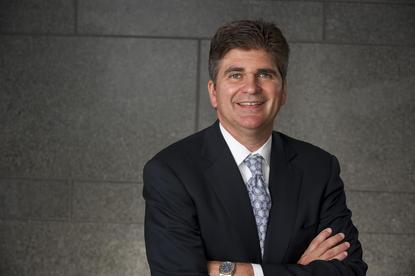The mainframe is back, and it’s getting agile: Chris O’Malley
- 07 October, 2016 14:20

Compuware chief Chris O'Malley: We are building new tools that customers love and it has changed the fortunes of the company."
Compuware’s CEO Chris O’Malley is adamant that demand for mainframe technology is not going away.
“The mainframe is growing as it relates to the capacity on the planet,” O’Malley tells CIO Australia. “IBM’s z13, the last launch, is an incredible engineering marvel in terms of a hardware business compute platform and has set the stage for it to become even more essential to large insurance companies and banks.”
But there’s a problem. With 255 billion lines of COBOL code worldwide, it’s difficult to ‘advance that IP’ at the rate and pace necessary to meet the demands of organisations creating new fast-paced and agile digital processes, says O’Malley.
“They’ve got this huge mainframe with all this IP that is fused into Waterfall processes with slow, sequential means of delivering software.”
Compuware’s mainframe business has been in decline for several years. In a filing with the U.S. Securities and Exchange Commission in November 2014, Compuware said revenue from its mainframe business was expected to drop by about 7 per cent between 2014 and 2016.
In late 2014, Compuware Corp’s new owner, US-based private equity firm, Thoma Bravo LLC split the company’s two remaining businesses. Its mainframe software operation, still known as Compuware was separated from its application performance management software business, Dynatrace. Compuware acquired Dynatrace in 2011.
O’Malley joined Compuware in mid-2014 as president of the firm’s mainframe business before being elevated to CEO in December of that year, following the acquisition.
A long-term senior executive at CA Technologies and more recently CEO at Chicago-based startups Nimsoft and VelociData, O’Malley told CIO Australia he came in to Compuware to “shake the thing up to its core.”
“Over the last eight quarters I have been here, we’ve made these bold promises that every quarter we would prove, that you could actually do DevOps and Agile [activities] on mainframes,” he says.
“We’ve delivered new products, updates to our classic offerings and integration with preferred DevOps tools over quarter for the last eight. So we’ve made a quantum leap for the mainframe generally in terms of its capacity to thrive at the speed and agility necessary in the digital age and specifically to Compuware and our performance.
“We are building new tools that customers love and it has changed the fortunes of the company as well. Every quarter, we are integrating with traditional toolsets that allows DevOps folks to have dominion over the platform using the tools that they are accustomed too.
"We are making it so the difference is only in syntax – it's COBOL versus C versus Java. To a computer science grad today, that's trivial. It's the difference between Italian and Spanish, it's subtle and they can easily pick it up. We've plugged the mainframe into the order of things that is familiar to them."
Mainframe versus cloud
O’Malley argues that the stability of mainframes was essential to ensuring that volatile global trading markets didn’t suffer from high data traffic volumes on the day the UK voted to leave the European Union.
“People were worried about currency issues and market issues related to Europe – but through the chaos of it all, everything remained liquid and transparent,” O’Malley says.
“It didn’t go from a state of chaos to panic. Even with the surge of transactions that were occurring and everybody hitting refresh on their mobile phone – every time you do that it creates mainframe transactions. The market went into a frenzy in an unexpected way and settled back down; common sense prevailed.”
He claims that “nothing bad happened” because these core trading platforms were running on mainframes; 96 of the 100 largest banks worldwide use mainframes as their core transaction processing engines, he said.
“Nothing failed. If you ran all of that stuff on the cloud and the response times got back and you couldn’t see your holdings and you couldn’t make a trade, that chaos can turn into panic.
“So the mainframe plays an essential role in making sure the worldwide economy runs without a hitch and that’s no different today than it was 10 years ago.”
O’Malley recalls arguing with a “kid” on social media who suggested that “you can do anything in the cloud that you can do on the mainframe.”
“This is certainly not true,” says O’Malley. “They day he made that argument was the day that Brexit was happening.”
Follow CIO Australia on Twitter and Like us on Facebook… Twitter: @CIO_Australia, Facebook: CIO Australia, or take part in the CIO conversation on LinkedIn: CIO Australia
Follow Byron Connolly on Twitter: @ByronConnolly

